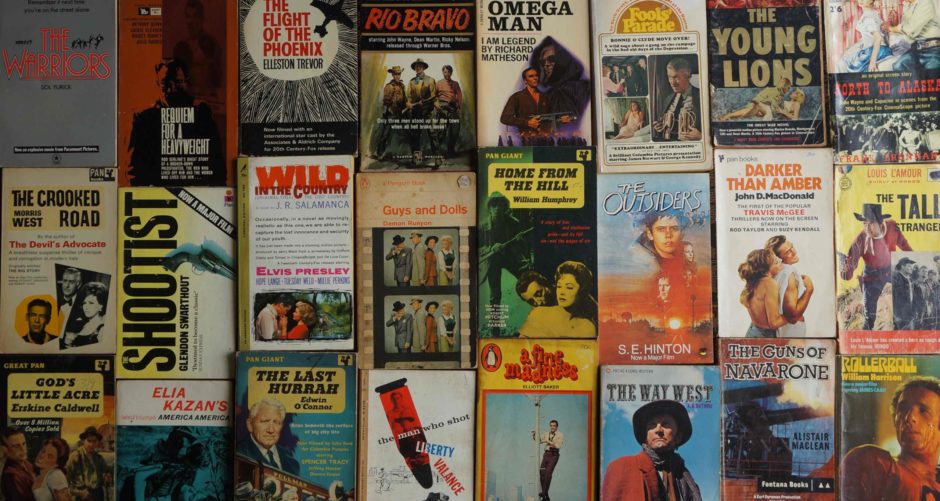FILM DIRECTOR: Lewis John Carlino
SCREENWRITER: Lewis John Carlino
FILM STARS: Kris Kristofferson, Sarah Miles, Jonathan Kahn, Margo Cunningham, Earl Rhodes, Paul Tropea, Gary Lock, Stephen Black, Peter Clapham, Jennifer Tolman
COUNTRY: England
THIS BOOK
AUTHOR: Yukio Mishima
TYPE: Novel
PUBLISHER: Penguin
THIS EDITION PUBLISHED: 1976
COUNTRY: Great Britain
COVER: Paperback
THE ORIGINAL BOOK
ORIGINAL AUTHOR: As Above
YEAR FIRST PUBLISHED: 1963
ORIGINAL BOOK TITLE: Gogo No Eiko
NOTES
GENRE: Drama
WORDS: Hmmm. I haven’t read this and I’m not sure I will.
I saw the film many years ago. I was old enough to watch it and, perhaps, not old enough to understand it, assuming there is something there to understand. I don’t mean to be pejorative but it is simple story of personal fascism and eroticism.
Yes, fascism and eroticism. Not uncommon in literature but here they are elevated by Mishima (or by his admirers) to the level of art. He is still a highly regarded author, and oddly, he seems to appeal to the intellectual literary left as well as the far right..
Yukio Mishima (1925-1970) was err, a character. He was a Japanese novelist, poet, playwright, actor, model, bodybuilder, closeted homosexual, hyper-masculine, militia leader, and nationalist. He saw himself as a post-modern samurai, who launched a failed right wing coup, and committed ritual suicide. Bland he wasn’t. For whatever reason the right seems to put out a lot of these nationalist romantic poets who are forever invading things and are unconventional in outlook – Italian Gabriele D’Annunzio comes to mind.
The novel (and what a great title) is a coming-of-age story from the perspective of a narcissistic adolescent boy living with his widowed mother in Yokohama, Japan. He and his equally narcissistic friends see themselves apart from Japanese society and are obsessed with restoring Japan’s former glory and traditions. His mother meets a sailor, who he (and his friends) see as the pinnacle of Japanese manhood, a modern samurai who lives a solitary life on the sea. They idolise him. But as the love between the mother and the sailor grows (watched in detail by the child through a peephole into the mother’s bedroom), and he becomes more “domesticated” the kids start to see him as flawed. The solution is to assassinate him to cleanse the world, the perfect society being one of beauty, eroticism and death wrapped in tradition and honour.
It’s a world of absolutes there are no shades of grey, fifty (groan) or otherwise.
For the film the location was changed to the English town of Dartmouth, Devon, where it was also filmed, and, this is perhaps its greatest flaw. The English may have been imperialists but they don’t have that militarism, or samurai tradition to draw on. Children fascists don’t organically spring from the ground as easily as they would, perhaps, in Japan (yes, I know, a big assumption). The film, perhaps, knows that and so downplays that a little while beefing up the working class sailor, upper class lady unconventional and erotic romance.
Kids acting like little farkers has a tradition (in film and literature) … Los Olvidados (1950), The Bad Seed (1956), Lord of the Flies (1963), Village of the Damned (1960), Devil Times Five (1974), Alice, Sweet Alice (1976) and all the horror ones, but here the evil stems from their philosophy and, of course, in the book the philosophy isn’t evil.
I enjoyed the film because I was going through a Kris Kristofferson phase. I was watching everything he was in … it was easier then when he was still a leading man. It’s a lot more difficult now. I can’t recall how Kristofferson’s Americanisms are explained but he is excellent as the sailor and in shape which helped with the erotic (and unsettling) sex and nude scenes on the screen. He and Sarah Miles also posed for a Playboy photo shoot in July 1976 which was quite revealing. It may be modest by todays internet standards but for two mainstream actors to appear in a spread like that was quite scandalous at the time and I suspect would raise eyebrows now (and maybe even kill careers) if mainstream. The photo shoot also created big problems between Kristofferson and his wife Rita Coolidge. I recall reading that he explained it away at the time by saying he was drinking too much. Which he was. He later admitted an affair with Miles. The film was never going to be mainstream and was not a hit when released, but it has a cult following. Interestingly, singer, songwriter and actor Kristofferson is of the American literary left.
Written and directed by New York born Lewis John Carlino who also wrote and directed The Great Santini (1979) as well as writing Seconds (1966), The Fox (1967), The Brotherhood (1968) , The Mechanic (1972), Crazy Joe (1974), I Never Promised You a Rose Garden (1977). All his films mix ideas in with the drama. “The Sailor Who Fell from Grace with the Sea” takes the mix to the extreme – art, literature, philosophy, eroticism and sex intertwine in the drama and the romance. In other words, a 1970s film.
Good? I ‘d have to watch it again.
LINKS
TRAILER



yep re Kirk … no one pushes Kirk around. His Bryna Production Company was involved with (partially funded) POG ..and…